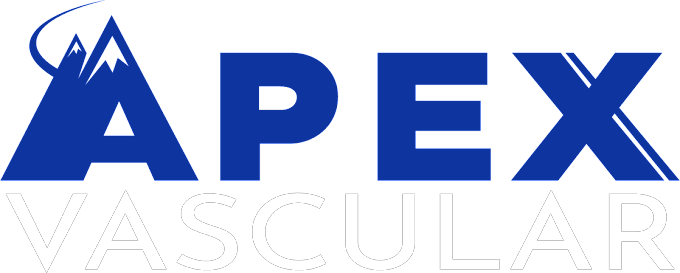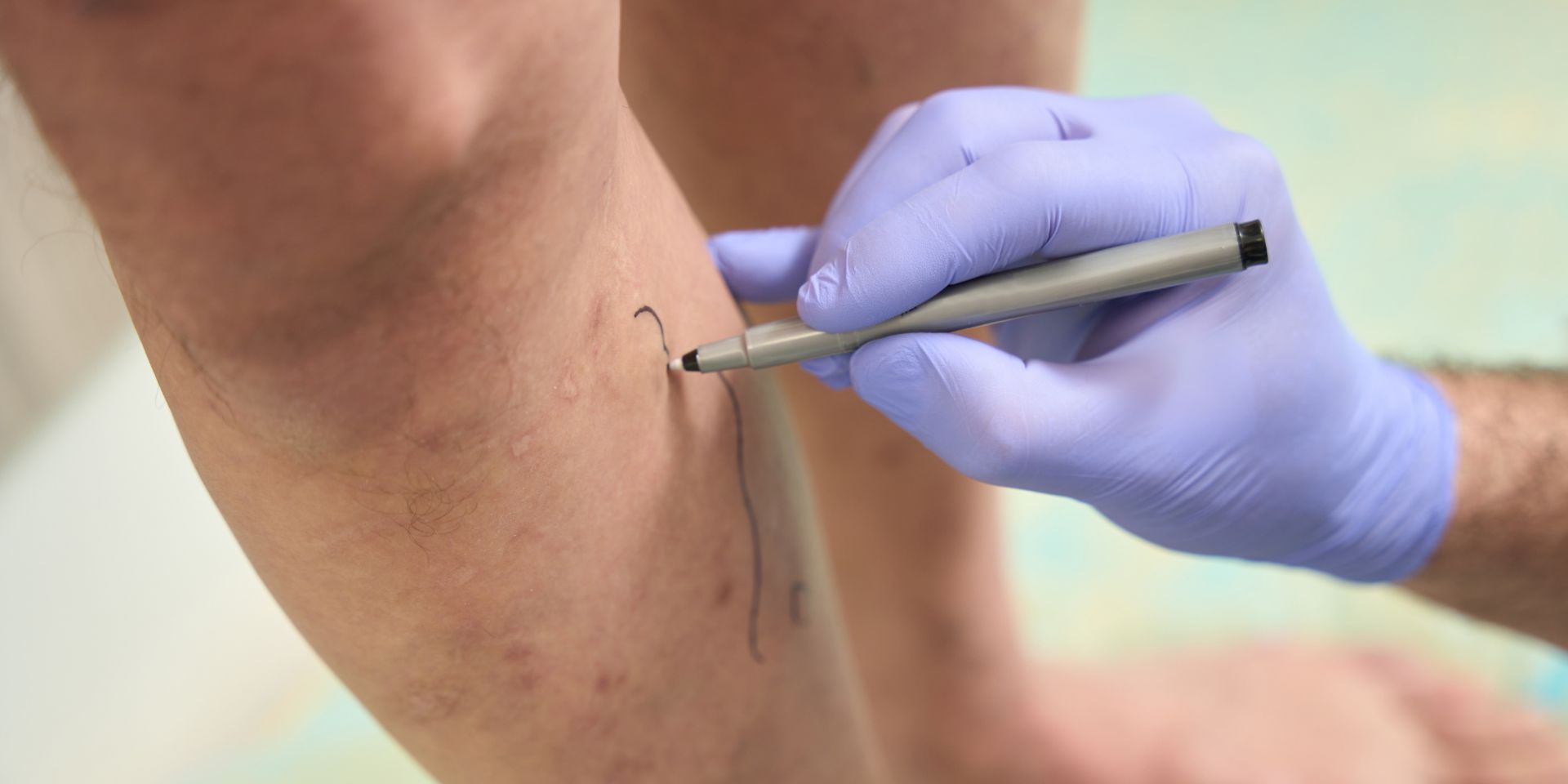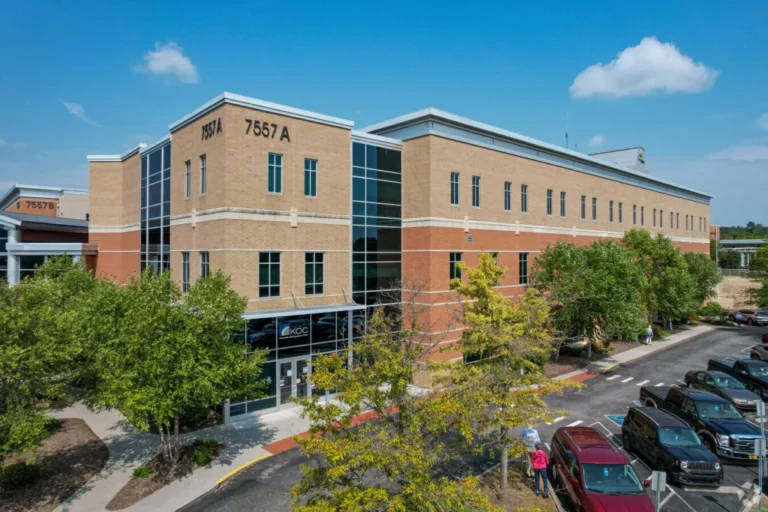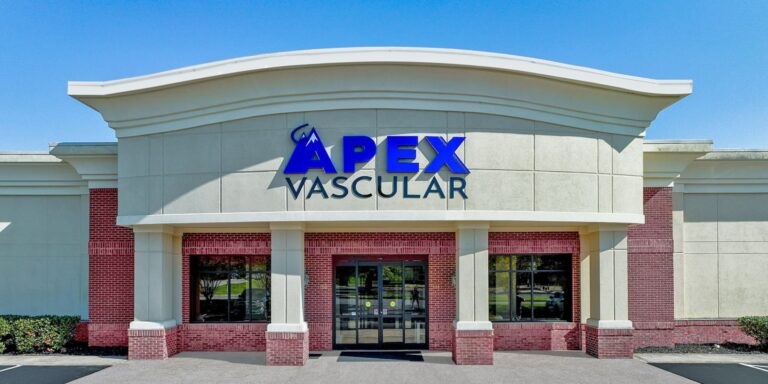Chronic venous insufficiency can significantly impact your quality of life, causing pain, swelling, and skin changes. By understanding the condition, you’ll know the importance of early detection and treatment in preventing progression to more severe stages and improving your overall well-being.
Venous insufficiency is caused by factors like deep vein thrombosis, obesity, and prolonged inactivity. Symptoms progress from mild discomfort to severe complications, including leg fatigue, swelling, and skin changes. Treatment ranges from lifestyle changes to minimally invasive procedures and surgery. Early intervention at APEX Vascular is crucial for preventing complications and improving quality of life.
What is Chronic Venous Insufficiency?
Chronic venous insufficiency (CVI) is a condition where leg veins fail to efficiently return blood to the heart. In healthy veins, one-way valves ensure blood flows upward against gravity, aided by leg muscle contractions. However, these valves can become damaged or weakened, causing blood to pool in the legs. This causes increased pressure in the veins and various symptoms.
Common causes of CVI include:
- Deep vein thrombosis
- Obesity
- Prolonged standing or sitting
- Pregnancy
- Genetic predisposition
Other factors like high blood pressure in leg veins, lack of exercise, and smoking can also contribute to the development of the condition.
CVI Symptoms

Chronic venous insufficiency symptoms progress over time, starting with mild discomfort and advancing to more severe complications. Early-stage symptoms include:
- Leg fatigue
- Aching
- Heaviness
These symptoms can be especially pronounced after prolonged standing or sitting. You may also experience swelling in the lower legs and ankles, often the first noticeable sign. Other common symptoms at this stage include itching, tingling, or burning sensations in the legs.
CVI symptoms worsen in the advanced stages. At this point, visible varicose veins and spider veins appear. Skin changes also become evident, including:
- Discoloration (often brown)
- Hardening
- A leathery texture
You may also develop venous stasis dermatitis, characterized by red, itchy, and flaky skin. In later stages, open sores or ulcers form, particularly around the ankles. These ulcers can be painful and slow to heal.
The progression of symptoms reflects increasing venous pressure and deteriorating vein function, ultimately impacting mobility and quality of life.
Diagnosing Chronic Venous Insufficiency
Diagnosis of chronic venous insufficiency typically begins with a free vein screening, which may include a physical examination. Your vein specialist assesses:
- Leg swelling
- Skin changes
- Visible varicose veins
Ultrasound imaging is the primary diagnostic tool for CVI. It provides both anatomical and functional information, allowing for the assessment of blood flow direction and valve competence.
Other diagnostic tests to measure limb volume changes and evaluate reflux and muscle pump function may also be used. In some cases, ambulatory venous pressure monitoring might be used, though it’s less common due to its invasive nature. Magnetic resonance or computed tomography venography may be employed for more detailed anatomical imaging.
CVI Treatment
Chronic venous insufficiency treatments focus on improving circulation, reducing symptoms, and preventing complications. Approaches range from lifestyle adjustments to advanced procedures, depending on disease severity.
Conservative treatments
Lifestyle modifications include regular low-impact exercise like walking or cycling to activate calf muscles and improve blood flow. Weight management supports this process further by reducing pressure on leg veins. Elevating your legs above heart level for 10–15 minutes several times a day helps alleviate swelling.
Compression therapy may be recommended by your doctor. It works by wearing graduated stockings (20–30 mmHg pressure) to help counteract venous pooling by applying the strongest pressure at the ankle. Anti-inflammatory medications manage discomfort, while prescription medical foods may be recommended to reduce inflammation.
Minimally invasive procedures
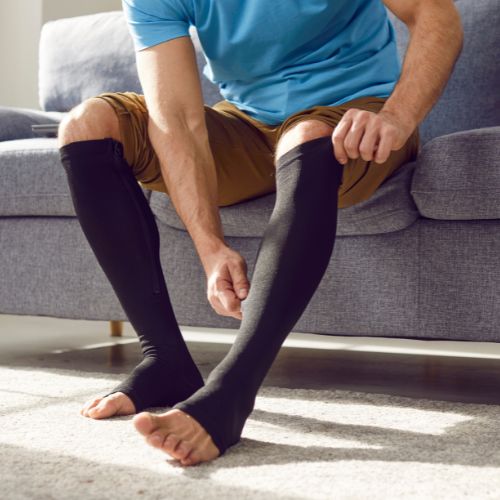
In some cases, your provider may recommend minimally invasive treatment, like sclerotherapy. For sclerotherapy, your doctor injects chemical agents to collapse smaller dysfunctional veins, which the body absorbs over a few weeks.
For larger veins, they may use endovenous laser ablation and radiofrequency ablation (RFA). These treatments use thermal energy to seal faulty veins through catheter-based techniques. They’re performed under local anesthesia with high success rates.
These outpatient procedures allow immediate walking and minimal downtime.
Surgical interventions
Ligation and stripping involve tying off (ligation) and removing severely damaged veins through small incisions. These treatments are typically reserved for advanced cases.
Valve repair surgically reconstructs incompetent valves or transplants healthy valves from other veins, requiring general anesthesia and up to six weeks of recovery. Subfascial endoscopic perforator surgery (SEPS) may supplement these interventions to address faulty connecting veins.
Treatment plans often combine approaches with compression therapy remaining essential post-procedure. If left untreated, CVI can lead to ulcers and permanent skin damage. This makes it important to seek treatment as early as possible to receive the best outcomes.
Choose APEX Vascular for CVI Treatment in Knoxville
APEX Vascular is the best for if you’re experiencing chronic venous insufficiency in Knoxville and the East Tennessee region. Our experienced vascular staff provides personalized, high-quality care, focusing on empowering you to achieve the best possible outcomes.
At APEX Vascular, our interdisciplinary team is renowned for its comprehensive skill set and unwavering commitment. They educate and guide patients through available endovascular and surgical approaches, crafting individualized treatment plans tailored to specific goals.
By choosing APEX Vascular, you can expect to be greeted with a smile and treated with respect throughout your healthcare journey.

Chronic venous insufficiency stems from factors like deep vein thrombosis and obesity. Symptoms evolve from mild discomfort to severe complications, including leg fatigue and skin changes. Treatment options range from lifestyle adjustments to surgical interventions. Early detection and treatment are vital for preventing complications and enhancing quality of life.
APEX Vascular is a vascular surgery and vein center with locations in Knoxville, Lenoir City, Crossville, Decatur, Harrogate, and Sevierville, TN. We are dedicated to delivering personalized, high-quality care that goes beyond medical treatment. Our exceptional vascular staff, boasting extensive experience in vascular surgery, works tirelessly to elevate the standards of patient care and contribute to your overall well-being. Visit us online or call us at 865-562-3232 to request an appointment today!
